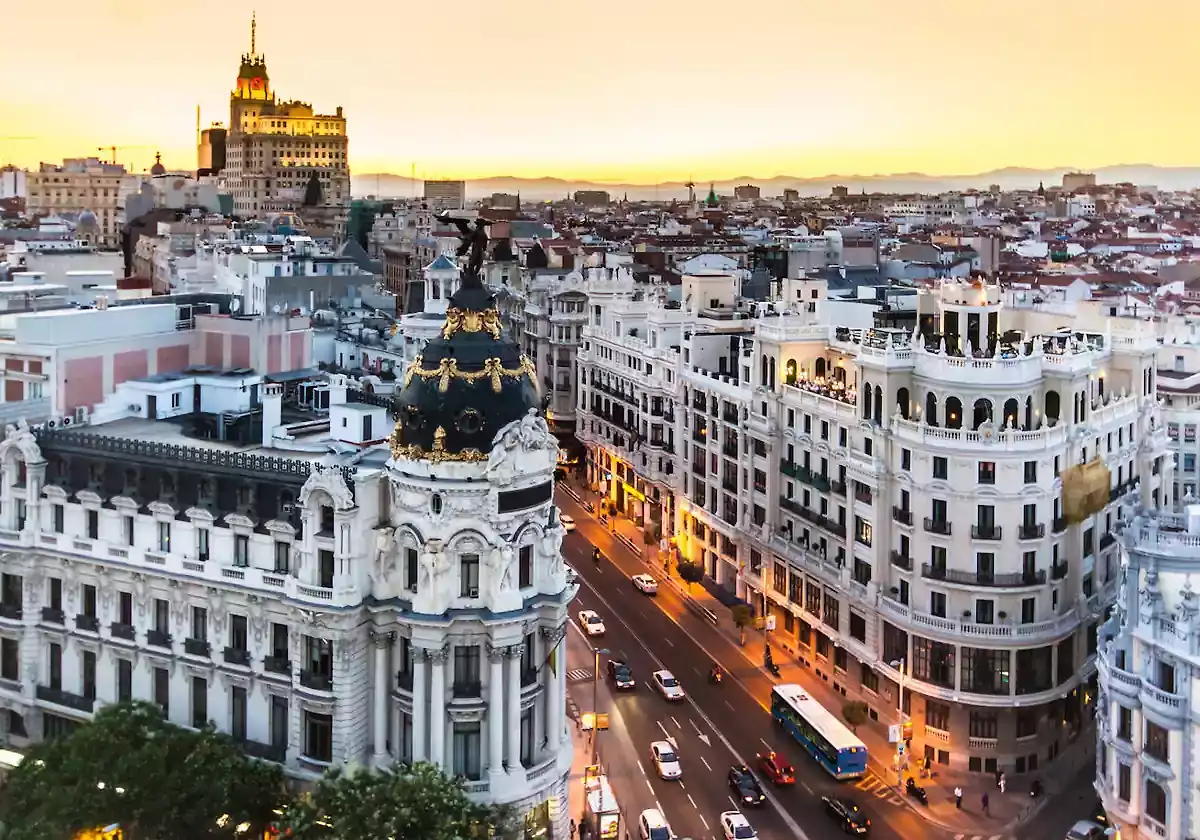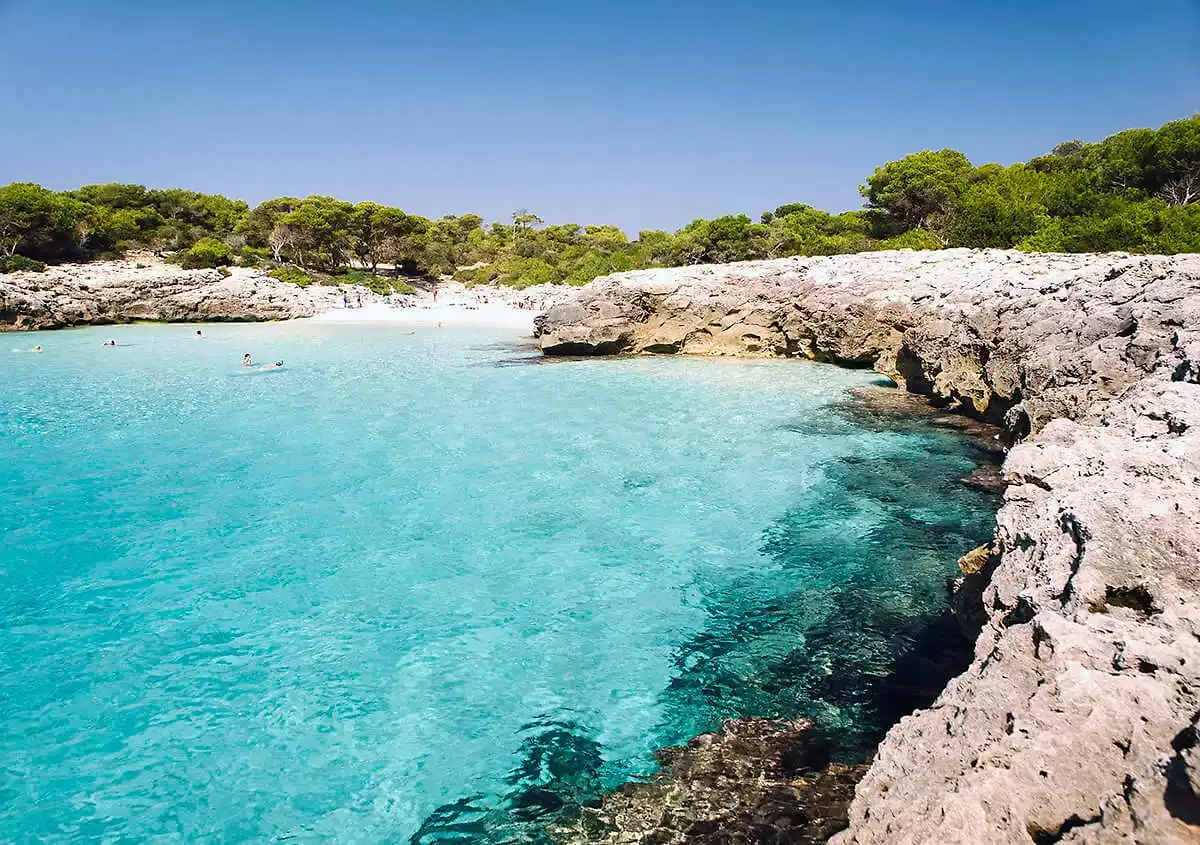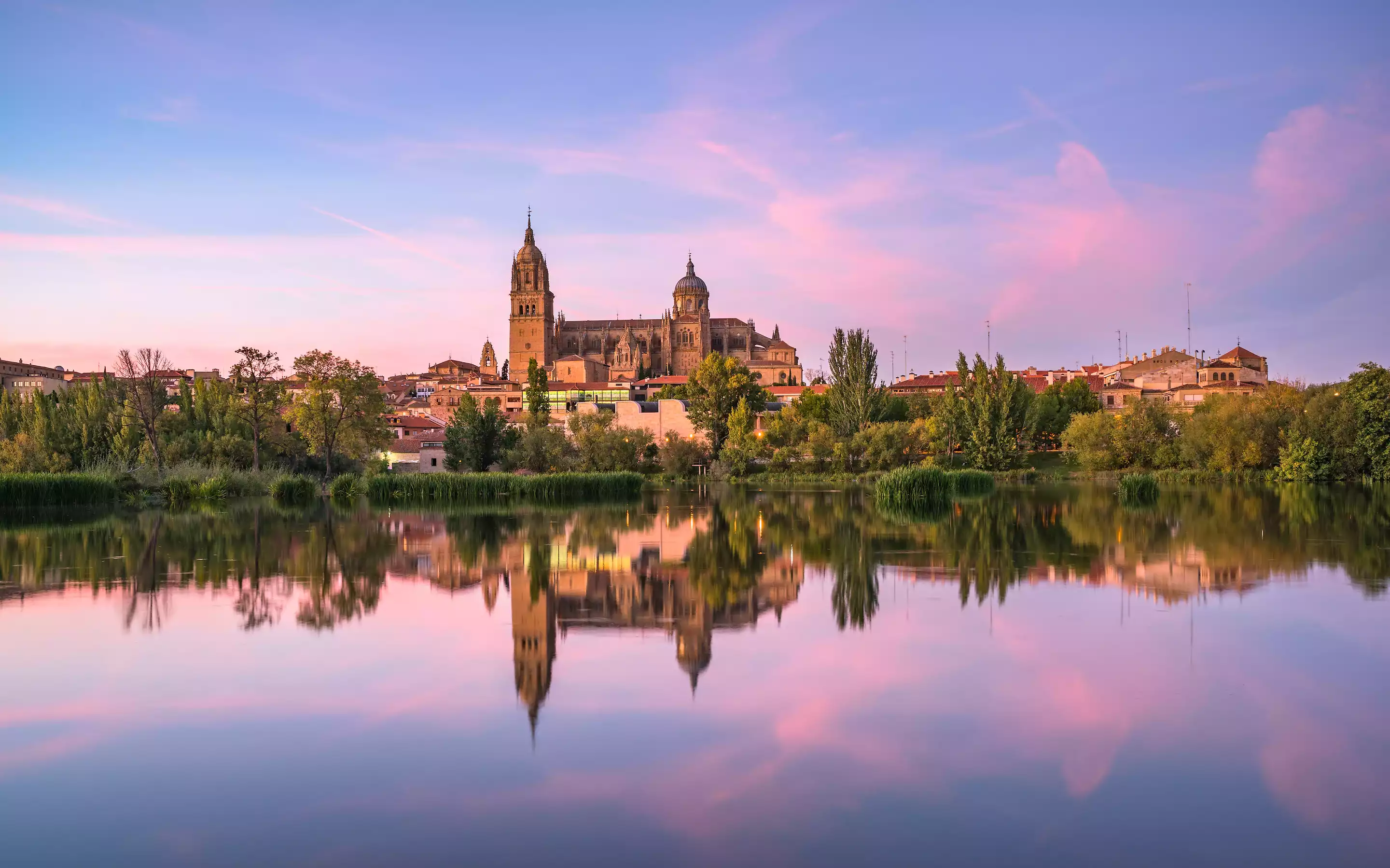Must Know: The Top 10 Places to Visit in Spain in 2024
Enjoying sun-drenched Mediterranean beaches, World Heritage cities, an exquisite culinary scene and a rich, multifaceted culture, Spain stands out as a truly unique destination. Few countries around the world can match its diverse range of attractions that satisfy the desires of every traveler.
In light of the country's extensive history, spanning Catholic monarchies, Muslim caliphates and conquerors of the New World, each region of Spain exudes a character entirely its own. Explore the notable Iberian destination by delving into a guide to the most captivating places to visit, each offering a unique insight into Spain's diverse and historic past.
The top 10:
1. Madrid: Best city for visiting world-class art museums

The lively Spanish capital, Madrid, adorned by perennial clear blue skies, displays its vibrant neighborhoods, architectural wonders and celebrated art museums. Located in the center of the city is the ancient Egyptian temple, Temple of Debod, which adds a touch of history to the lively atmosphere.
For art enthusiasts, Madrid's "Golden Triangle of Art" is a paradise. Comprised of the world-acclaimed Prado, Reina Sofía and Thyssen-Bornemisza Museums, it houses some of the most precious art collections in the world. These cultural gems line Madrid's Paseo del Prado (Paseo del Arte), recently designated a UNESCO World Heritage Site.
Planning Tip: Immerse yourself in Madrid's lively street culture, a haven for wine-soaked tapas crawls. Wander down "Cava Baja" in the historic "La Latina" neighborhood, where charming bars and taverns create a vibrant atmosphere. This iconic street stands out as one of the city's best, inviting you to join locals as they hop from one bar to the next, indulging in a delightful array of Iberian hams, charcuterie, and cheeses.
2. Barcelona: Best for modernist architecture
Located between the Mediterranean and the Pyrenees, Barcelona, the Catalan capital, captivates with its impressive aesthetics: with avant-garde architecture, attractive urban beaches and a Gothic Quarter full of more than 2000 years of history.
A pilgrimage to Barcelona is incomplete without immersing yourself in Antoní Gaudí's masterpiece, the Sagrada Familia. The influence of the iconic Catalan architect permeates the city, inviting you to explore his other architectural masterpieces: Casa Batlló, La Pedrera and the whimsical Park Güell.
Gaudí's legacy extends to Plaça Reial, a lively square in the heart of the Barri Gòtic, which dates back two millennia. Illuminated by Gaudí's inaugural public work and decorative street lamps, the square oozes charm. Within this old neighborhood is the grandeur of the Cathedral of the Holy Cross and Saint Eulalia, a masterpiece erected during two centuries, from the 13th to the 15th century. Bordering the neighborhood is the Mercat de la Boqueria, one of the oldest markets in Europe, which adds a vibrant touch to Barcelona's rich tapestry.
3. San Sebastián: The best gourmet experience.
This captivating Basque coastal town in northern Spain is a vision of beauty, adorned with belle époque architecture, sprawling white sand beaches that stretch for miles, and the blue waters of the Bay of Biscay. Take a leisurely stroll along La Concha Beach Boulevard on a clear day to absorb the local sea-loving culture.

San Sebastián, or Donostia in Basque, has transformed from its origins as a whaling city into a global gastronomic center. With the highest concentration of Michelin-starred restaurants per square meter in Europe and ranked as the second most Michelin-starred city in the world (after Tokyo), it is a paradise for culinary enthusiasts.
Pro tip: You don't need a Michelin star budget to savor the culinary delights of San Sebastian. Head to the Old Town, especially along 31 de Agosto Street. Here, a variety of restaurants and bars offer tempting displays of assorted pintxos, appetizers presented with skewers or toothpicks, making for a delicious and affordable culinary adventure.
6. Canary Islands: Digital´s Nomad Paradise
The Canary Islands are an archipelago located in the Atlantic Ocean, off the northwest coast of Africa. They are an autonomous community and an outermost region of the European Union and Spain. The Canary Islands are made up of seven main islands, listed from largest to smallest: Tenerife, Fuerteventura, Gran Canaria, Lanzarote, La Palma, La Gomera and El Hierro. There are also several smaller islands and islets.
5. Seville: Best place for cultural sightseeing
The delights of Seville are in the details – this charming Andalusian capital may give you the sensation of déjà vu, perhaps because its year-round sunny days, resplendent gardens and intricately carved palaces have made it a favored filming location for big productions from Star Wars to Game of Thrones. Its allure lies in its idiosyncratic mix — horse-drawn carriages, flamenco tablaos (stages), colossal Gothic structures and Islamic stylistic details all blend together to create this multi-layered dreamscape of a city.
Seville's cultural wealth is woven from the tapestry of its diverse and extensive history: formerly the Arab capital, then the seat of the Castilian aristocracy and, later, the European gateway to America after Columbus' historic voyage in 1492. This unique mix of cultures is born comes vividly to life as you explore Seville Cathedral, the largest Gothic cathedral in the world and the resting place of Columbus. A few meters away stands the Real Alcázar, a magnificent example of Mudejar architecture adorned with Islamic, Baroque, Gothic and Renaissance elements. The juxtaposition of these two landmarks paints a compelling portrait of Seville's captivating historical layers.
Planning tip: Want to experience a huge celebration? Time your visit for one of the city’s great annual festivals, notably the Semana Santa and Feria de Abril.
6. Toledo: Best for layers of history
This ancient walled city, spanning 2000 years of history, holds a prominent position in Spain's historical narrative. Once the capital of the Visigothic Kingdom, a stronghold of the Emirate of Cordoba, a Roman municipium, the seat of power for King Charles V, and the former capital of Spain until 1560, Toledo is now a UNESCO World Heritage Site. Enriched by Jewish, Christian, and Islamic influences, Toledo is fondly known as "The City of Three Cultures." Wander its narrow cobblestone streets to witness the echoes of this unique cultural amalgamation—ancient Roman structures, Moorish architectural styles, the Catedral de Toledo, the El Tránsito Synagogue, and the Cristo de la Luz Mosque.
Pro tip: For breathtaking panoramic views and a picturesque photo opportunity of this historic city along the Tagus River, visit the Mirador del Valle.
7. Granada: Best city for Western Islamic architecture
Situated at the foot of the snow-capped Sierra Nevada mountain range is the postcard-perfect Andalusian city of Granada. It is home to the Alhambra palace complex and the ancient citadel of the Nasrid Dynasty, the last Muslim dynasty in the Iberian Peninsula which ruled until the 15th century. Meaning “the Red One”, the Alhambra is a stunning architectural masterpiece merging Moorish and Christian decorative elements – it’s impossible not to feel transported to a fantasy world with its intricately carved walls and archways, mirror-like pools and colorful mosaics.
Planning tip: Continue the visual feast at the Palacio de Generalife right by the Alhambra, a summer palace whose gardens and perfectly orchestrated fountains provided repose for the ancient Nasrid sultans.
8. Santiago de Compostela: Best city for spiritual tourism
Santiago de Compostela is the capital of Galicia and the final destination of the Camino de Santiago (Way of Saint James) pilgrimage, a tradition that stretches back over 1000 years. On any day of the week, you’ll see pilgrims from all over the world paying their respects at the Basilica of Santiago de Compostela, the reputed burial place of St James the Apostle.
Even non-pilgrims can relish the mystical beauty of this northern Spanish city with a distinct Celtic heritage. Its beating heart is the Plaza del Obradoiro, where stands the luxurious Hostal dos Reis Católicos, believed to be the oldest hotel in the world that was once a hostel for pilgrims.
Planning tip: Santiago has a rich gastronomic tradition highlighted by its excellent seafood, so be hungry when you visit the city's second most popular attraction after the Cathedral, the Mercado de Abastos food market.
9. Balearic Islands: Best for beaches and sapphire-colored waters
Anyone who’s been to these outlying islands east of the Iberian Peninsula would recognize the “Balearic blues” — the distinct shades of blue that characterize these Mediterranean waters. This archipelago’s four largest islands – Ibiza, Mallorca, Menorca and Formentera – are blessed with countless beaches and calas (coves) embraced by white sand coastlines and rugged cliffs.

Among these islands, Ibiza is the most famous one, mainly for its reputation as a 24/7 party destination. Yet Ibiza’s clubbing culture is just a tiny slice of this spectacular island on the Unesco World Heritage List. It is fringed with sapphire-colored waters, filled with historic fortified towns, and has a plethora of hidden inlets and charming beachside restaurants and cafes. You can visit the ruins of the ancient Phoenician civilization at Sa Caleta and the Puig des Molins necropolis to get a glimpse of the ancient colonies that inhabited this island, long before the clubbers discovered it.
10. Salamanca: The home of the Tormes
The city has a wealth of well-preserved historic architecture, much of it built from the distinctive golden sandstone that gives Salamanca its warm glow. Plaza Mayor, the main square, is a stunning example of Spanish Baroque architecture and is often considered one of the most beautiful squares in Spain.

Salamanca is associated with the Spanish language and literature. The Royal Spanish Academy (Real Academia Española) was founded here in 1713. The town also has ties to Miguel de Unamuno, a prominent Spanish writer and philosopher.